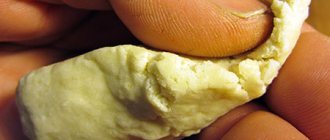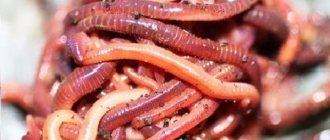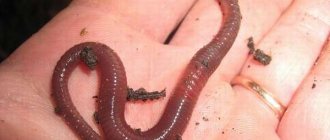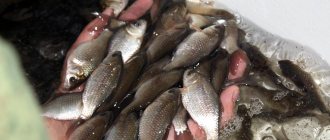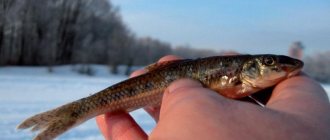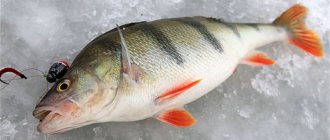Types of worms for fishing
Among the variety of worms for fishing, three main ones should be distinguished:
- earthworm or earthworm;
- red worm (dung);
Accordingly, the red spineless creature should be looked for in manure or pits with food waste.
And the earthworm, having a pinkish tint, is longer than the dung worm and lives in vegetable gardens, crawling to the surface in rainy weather. In hot weather, you have to dig the earthworm out of the soil, going 15-20 cm deep.
One type of earthworm, the crawler, is considered popular among fishermen. This is the largest spineless fish used as bait (length 30 cm, thickness 9 mm).
Other less common worms:
- The iron ore worm has a dark head and is gray-smoky in color and lives in clayey soil. It is a good bait for predators because it holds very tightly.
- The underleaf worm is larger in size than the earthworm and dung worm. A purple or bluish tint characterizes its color, and you can find such bait in the forest under long-standing leaves, old straw, and sawdust. An excellent bite with such bait is guaranteed; low temperatures are not scary for it.
- The meadow worm is a black-headed creature that is found under reeds, in damp areas of wastelands, intended only for large inhabitants of reservoirs, due to its size and strength.
- The river worm is very thin and long (2 mm thick). The red-gray bait lives under stones and in the roots of plants at the very bottom of the reservoir.
- Sandworm is a commonly found marine creature, about 30 cm long. The dark-colored bristle worm, living in shallow water, is an excellent bait that attracts large waterfowl.
- The hairy worm (Nereis) , which lives in the sea, is suitable as bait for any marine predatory fish. However, digging and selling such an inhabitant is prohibited.
- The waterworm is rough and quite long (20 cm) with a small thickness of up to 5 mm. Ide and bream are willingly caught on this brown-red delicate bait.
What types of worms are effective for catching crucian carp
Of course, most often we are used to fishing with earthworms. They can be easily dug up in the garden or simply collected on the road after rain. For catching crucian carp, they are not very convenient due to their decent size - their length often reaches 15 cm. You have to constantly divide the earthworms into parts, so the fish easily pulls them together without getting hooked. In addition, they don’t look very appetizing on a hook.
However, if you go fishing for large crucian carp - weighing from 500 to 1000 grams, then earthworms will be the ideal bait. In early spring or during the pre-spawning period, you can successfully catch smaller crucian carp using them. After all, fish have a huge need for protein, and large animal bait looks extremely attractive.
The dung worm, which holds well on the hook due to its strong and thick skin, has proven itself much better. Its dimensions rarely exceed 7-8 cm, which allows you to plant it entirely. When pierced, it releases a yellow liquid, the smell of which attracts any fish. It is quite difficult to obtain dung worms on your own, but you can find them for sale in any fishing store.
In hot weather, crucian carp can be caught well using underleaf. This variety of worms lives under wet leaves, in the roots of some plants, and in the summer after rain you will definitely find them in the straw. Unfortunately, it does not hold well on the hook and it is easy for the fish to pull it off. But it is precisely due to its softness that it has additional attractiveness.
You can catch crucian carp with many other types of worms (California, iron ore, crawler, etc.). True, finding them is much more difficult than those described above. At the same time, there is no particular difference that can affect the result of fishing.
Extraction methods
In rural areas, finding a worm is easy with a fork and shovel. This method is also suitable for the city.
To do without a shovel, just water under a board or piece of coarse cloth placed in a shady place. After several days, lifting the abandoned object will certainly reveal a large number of spineless ones.
Having decided to get water worms, fishermen use a shovel or any other tool that allows them to scrape bottom soil onto the shore. Before fishing, you can check the leaves of water lilies, where water underleaf often lives.
And when fishing is planned at sea, it is easy to collect sand bait after low tide, raking up mounds of sand.
Breeding
Living far from nature, it is not difficult to create an earthworm farm at home.
To do this, take a “breathable” container with a volume of 50 liters: wooden boxes, a plastic basin with several holes. If the container quickly deteriorates, it is replaced with a new, larger one. Then ordinary garden soil is laid without humus, roots and old leaves.
There is no need to add sand and crushed stone to the bottom of the container, because grains of sand negatively affect the digestive system of a spineless creature.
Conditions for keeping the worm:
- Do not forget to loosen the top layer of soil (every two to three days, depending on external conditions).
- If you find a ball of worms, shake it thoroughly.
- Do not allow the soil to dry out.
- Feed the spineless.
You need to consider the nutrition of worms in more detail. After all, they are not as omnivorous as it seems at first glance. Leftover human food such as milk, cereal, bread, fish, meat, cottage cheese, tea leaves, and salty foods are absolutely not suitable .
It is food of plant origin that will be the ideal food: well-moistened rolled oats, bran, a small amount of garden leaves poured with boiling water and cooled to room temperature (once every 3-4 weeks), peeling vegetables or fruits (with the exception of potatoes).
The worms are fed approximately once every seven days. The main thing is that they have time to process food.
Don't forget to control soil moisture. A simple test will help with this: a lump of earth is squeezed in your hand, if after that it does not crumble and water does not come out, then the habitat for the worms is comfortable. Drying of the top layer of soil indicates a lack of moisture.
The container with live bait must be placed on some kind of pallet so that excess moisture does not spread.
With proper care, spineless creatures reproduce very quickly at an optimal temperature of 180C. For example, having a box volume of 50 liters, you can collect 1.5 -2 liters of individuals every week.
Conditions for proper storage of worms
Knowledge of how to properly plant a worm will not be enough if the storage conditions are neglected. From the moment they are purchased or dug up until the moment they are used for their intended purpose, the worms must remain alive. Worms can be placed in any container, as long as it meets some rules:
- had a lid with small holes to allow oxygen to enter;
- the lid must close tightly to prevent the worms from spreading;
- Inside you need to pour earth from the place where the bait came from.
Failure to comply with these rules will result in the worms losing their attractiveness and the quality of the catch will noticeably decrease.
Digging (where and how)?
The most popular dung spineless is dug out of greasy soil or wet rotting manure with a pitchfork. It is easy to distinguish by the following characteristics: reddish-yellow color and yellowish liquid released when pressed.
A larger type of earthworm, a light gray or pinkish worm, sits at a depth of 15-20 cm in the garden soil. Therefore, they take it out with a shovel along with the ground, put the soil aside and break it, pulling out the bait.
The used soil is returned back. However, after the rain you can come and collect these individuals from the surface of the soil.
The red and purple underleaf does not need to be dug up at all, since it is enough to use a convenient object to lift straw, wet leaves or sawdust.
Hunting for crawling is considered special, since digging near the homes of cunning worms (round holes in the ground, covered with leaves) is useless. Their tunnels are built too deep.
Therefore, you need to come when it gets dark and wait for the crawl. Then carefully pull the worm out of the hole. And thus, the bait for a big catch has been found.
How to store?
Storing worms in hydrogel
The method of storing worms depends on the time of their transportation. A box or canvas bag with soil is suitable for a long stay of spineless bait (a week or two).
As with breeding, spineless creatures must be fed with wet leaves.
Of course, plastic, metal (non-galvanized), plastic buckets will turn out to be more durable savings containers. Ideally, use special convenient store-bought containers.
The most important rule is that you absolutely cannot leave spineless creatures in the sun. And don’t keep different types of them together.
Spineless merman are allowed into a jar of water from their native reservoir. The hairy worm feels comfortable in the refrigerator.
Useful tips
- Always take a small shovel with you when fishing. On the shore of a reservoir, you can use it to dig up worms, which are much more appetizing for crucian carp than those brought or bought in a store.
- Do not store the box of worms in the sun. Try to put it in the shade or hide it under a bush. Otherwise, 2-3 hours of exposure to the sun is enough to make the worms unsuitable even for hooking.
Crucian carp will not bite on worms that have been in the sun for a long time
- To improve the bite, you can add a few drops of a natural-smelling flavoring (dill, garlic, etc.) to a jar of worms. Cottage cheese, crushed cherries or strawberries have proven themselves well, as they impart an unusual aroma and attract crucian carp.
- To keep the worms on the hook moving, you can dip the bait in garlic juice before casting the rig into the water. Sunflower or hemp oil will also work. This will definitely make them move actively.
- When catching small crucian carp or so-called “piglets”, you don’t have to leave the tail of the worm on the hook. Such a fish almost immediately tries to swallow the bait, so it will be enough to cover the tip with a small piece 1-1.5 cm long.
The video below will show you different ways to put a worm on a hook:
Methods for placing a worm on a hook
Currently, fishermen use three methods for placing bait on a hook:
- “Stocking” is one of the methods when a spineless creature is put on a hook in the same way as tights are put on a leg. A float rod is suitable here.
- The second method involves threading a worm onto a hook, piercing its body in 2-3 places. Bottom gear is often used.
- The third method requires cutting the bait into several parts and placing each one in turn on the hook. Such a bunch is of interest to large waterfowl.
Read about the technologies for planting bloodworms and maggots by following the links. And about planting live bait here.
Sometimes a kernel of corn is planted with a spineless creature.
Catching bream with a worm: what rules must be followed to make it successful
Catching a large bream is luck and a legitimate pride even for an experienced fishing enthusiast. After all, this sensitive and cautious fish will not “take” every bait. In order for a bream to be hooked, three prerequisites must be met:
- The bait should be quite tempting;
- The fishing line to which the hook is attached must be thin (if its thickness exceeds 0.2 mm, the bream will almost certainly be wary and not touch the bait, even when hungry);
- The fisherman must remain silent and not move. The slightest extraneous sound will make the fish wary, and the likelihood of a bite will sharply decrease.
And, of course, you need to know in what places and at what time of day you can most often expect a bite.
One of the best baits is a worm. Bream readily takes earthworms, dung worms, and “underleaf” worms, which are distinguished by their cherry-red color and strong mobility. At night, when fishing with a bottom fishing rod, the most “catchable” bait is a large earthworm, and at morning or evening dawn – a bunch of dung worms.
Preparing worms for bream fishing: what needs to be done
We must remember that worms just dug out of the ground (or extracted from humus, from under the thickness of leaves) are of little use for fishing. The unpleasant smell scares off such sensitive fish as bream. Therefore, they should be kept for at least 24 hours (preferably 48) in a container with damp grass or moss so that they have time to clear the intestinal contents.
Note: some experienced fishermen advise adding a little vegetable oil to the container to better clean the worms.
Worms can be stored for a long time in some container with a tightly closed lid. You need to put wet grass, moss or sand inside, and make several small holes in the walls or lid so that there is air.
How to properly place a worm on a hook when fishing for bream?
When baiting a worm, remember that a moving bait will always attract fish better than a stationary one. Therefore, place the bait not along the hook, but across the hook. Pierce the worm in two places: in the middle of the body and near the head, then its tail will wriggle strongly, attracting fish.
If you catch bream during daylight hours using dung worms, attach a whole bunch. Moving in different directions, bright worms will form a “teeming lump”, especially tempting for this fish.
By following these simple rules, you will significantly increase your chance of successful fishing.
dom-ribolova.ru
How to attach a worm to crucian carp/carp/bream, etc. (which method to choose)?
- To catch crucian carp, usually a dung worm is used as bait , which is attached in a ring, a “stocking”. Since this fish is unpredictable, they often use only a piece of a spineless creature or one that has already been used.
- The most delicious bait when fishing for carp are earthworms. Having stepped back a little from the head, the hook is inserted under the skin and pierced the spineless fish in several places, then the end of the sting is hidden with the help of the tail, so that a free piece 1 cm long remains.
- Bream does not like very bulky bait , therefore, crawls are not suitable. Other smaller worms are placed carefully so that long tails do not remain and the sting appears exposed.
- In order to catch catfish , fishermen take several crawlers, put them on, piercing them in the middle with a hook, and hide the point in one of the heads.
Basic principles of catching crucian carp with a worm
Fishing with worms as bait requires a few things to consider. Let's start with the fact that it is best to plant it from the “head”, which is considered the strongest place. Thus, the “earthly” resident will be more firmly on the hook.
Then it is necessary that he maintains mobility. Therefore, the worm must be alive before you put it on the hook. Otherwise, it will not move, attracting fish, but will become invisible in the deep muddy bottom. For the bait to be mobile, it is also necessary that part of it (about half) protrudes beyond the sting itself. In addition, it is important to puncture the worm correctly, causing minimal harm to it. This way it will wriggle longer and greatly increase the chance of attracting aquatic inhabitants.
Invertebrate organisms that are too long are best cut into pieces. It’s just that if you attach a worm 7-15 cm long, there will be a large number of escapes. The crucian carp will not be able to completely suck in and swallow the bait. Its mouth is much smaller than that of carp or carp. It is optimal to leave the “tail” from 2 to 5 cm. You cannot expose the sting either - the fish will simply prick and spit out the bait.
Large crucian carp are more finicky and careful. It is not enough for them if the worm occupies only part of the hook.
The correct thing to do is to ensure that it completely covers the tip, but hangs freely by about half its length. Thus, the fish will be able to taste it, “savour” it and confidently swallow the bait.
If the fish's interest in the bait is unstable, it is recommended to change the worm every time it bites or tries to pull it off the hook. Crucian carp can be extremely squeamish and often ignore even a slightly bitten worm.
Don't forget about the hook itself. Its size when catching crucian carp with a worm should be 10-12 according to international numbering. It is desirable that the fore-end be thin and slightly elongated. This way, the worm will hold on better and be less injured when inserted.
How to attach a silicone worm?
Today, many fishermen ignore such a wonderful and diverse type of bait as the “silicone worm”.
After all, a living being, even if it is not in very good health, creates great vibrations. But those who use this artificial bait usually do the same thing: they cut off the front part of the worm, thus trying to reduce the number of empty bites, and put the head on the jig.
To improve the quality characteristics of the bait, it is better to use a more original rigging method.
To do this, you need to take a small piece of lead (compared to the size of the bait), then use pliers to squeeze it and insert it almost completely into the head of the bait.
Next you need to solder the resulting hole. The prepared worm is pierced in the middle with a hook and the sharp end is brought out.
Be sure to check the operation of this design before fishing: immerse a silicone worm with lead to the bottom and pull. The bait should move in a zigzag pattern. A weight is taken weighing about 3 grams if the fishing depth does not exceed 5 m.
Tips/Tricks
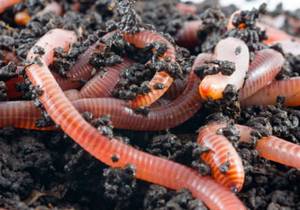
Of course, when putting on a worm, factors such as the type of fish and the bite are taken into account.
Usually, spineless creatures for catching small waterfowl are best baited from the head, lowering the tail. But if the fish is careful, then the worm is baited with a pretzel.
In this case, the point is threaded somewhere in the middle from the head to the tail, and the creature is put on the hook until the length between the end of the tail and the sting reaches 1.3 cm. Then the point is pulled out and inserted on the other side of the worm, keeping distance 1.3 cm from the head.
Large non-predatory fish are attracted in large numbers by the big red bait. Although the earthworm stays on the hook longer.
Recommendations for choosing a rigging method when fishing for different types of fish
Each type of fish has its own specific feeding habits. Some species feed only at the bottom, others only at the surface, and others combine both. Fish also differ in the rate at which they consume the food they find. Some species immediately grab everything that moves, others repeatedly try, tug and only then swallow. Most often, the worm is used to catch fish from the bottom. Based on this specificity, fishermen have developed the most successful recommendations for catching various types of fish;
- For crucian carp. They use types of worm bait in which a long, moving tail or tails remain, except in cases where there are a lot of small crucian carp in the reservoir. For catching large and medium-sized crucian carp, a bunch of several small or medium-sized worms is suitable. For catching small crucian carp - pieces of a worm or its small specimens with the obligatory removal of the hook point outward. In some reservoirs, crucian carp prefers a worm that has already been chewed by previous bites. In this case, after baiting the hook, the tip of the worm is crushed;
- For bream. You can use “crucian carp” bait methods. Does not like bait that is too bulky. I really like bait made from several pieces of worm or a bunch of small worms. It can be useful, when baiting a worm with a “stocking,” to move it above the hook onto the fishing line. To catch large specimens, a medium-sized crawler with a tail hanging from a hook is used. In all methods, the sting of the hook is hidden inside the worm;
- For carp . Most often, a dung worm is used in the form of a garland of several worms. It is very good for catching carp to use a sandwich made of a worm, pierced at intervals and with a grain of corn. Baiting a hair rig with a worm pierced in two or three places has proven to work well. Used for catching carp and a bunch of small worms pierced with a hook in the middle. It happens that it bites well on earthworms collected near a pond;
- For catfish . The largest of the worms, the crawler, is used. 3-6 worms are placed on the hook. The catfish's mouth is huge and is capable of swallowing everything that is offered to it. To attach worms when catching catfish, in addition to a single hook, a double hook is used. It is useful to secure the worm on the hook with a stopper of animal or plant origin - maggot, live bait, leech, frog, locust, mole cricket, corn, pearl barley, clam.
